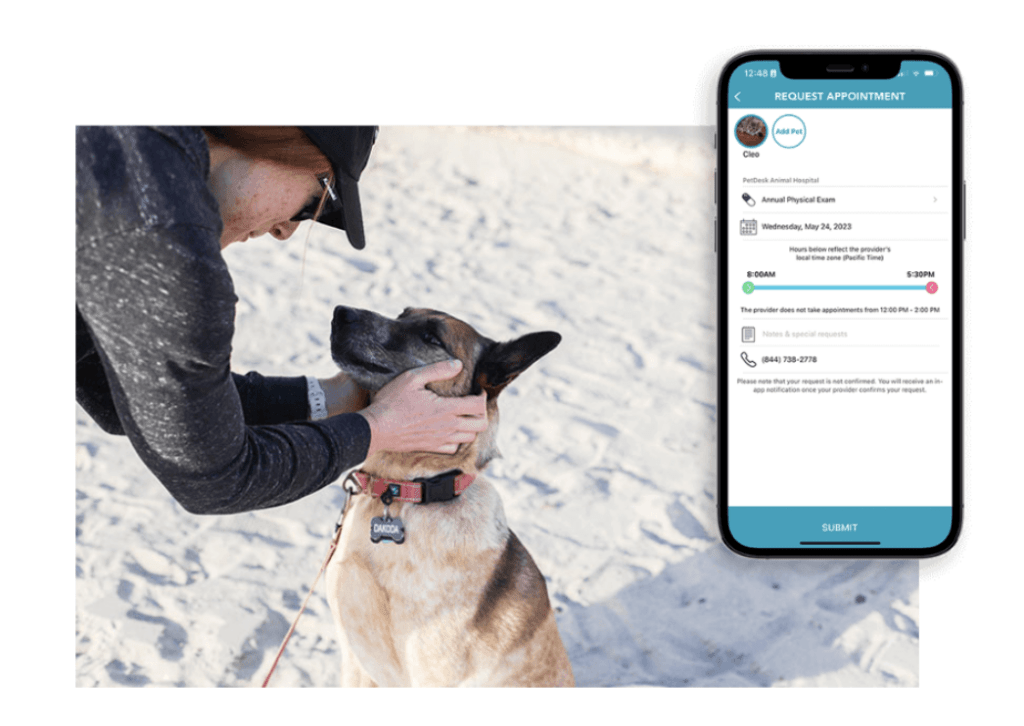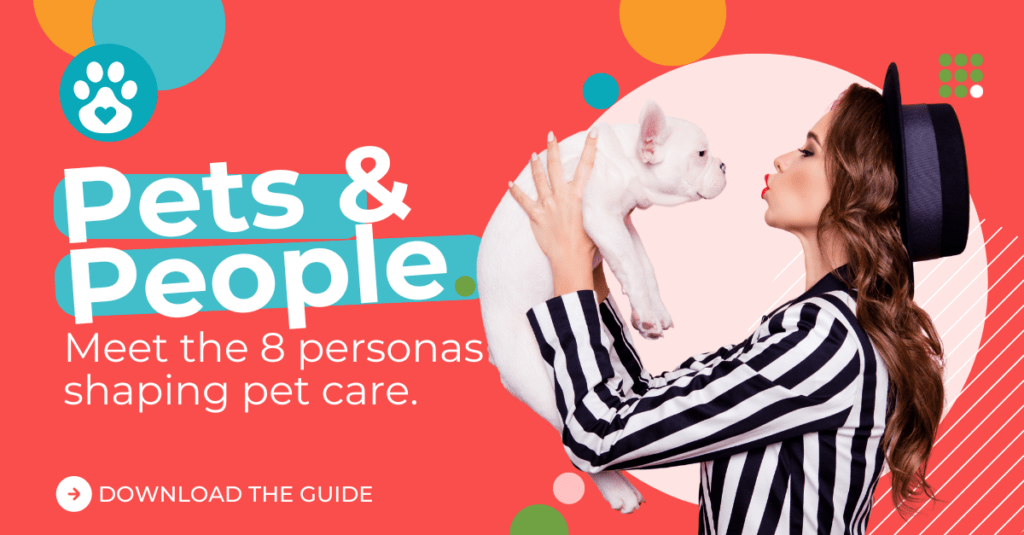We live in a world where our furry friends can enjoy all the luxuries and milestones that we do. Welcome to the era where Barkday Parties light up the lives of our canines with festive celebrations, and Doga (Dog Yoga) sessions offer a serene bonding experience for pets and their owners. It’s a time when pet slimming classes are on the rise, ensuring our four-legged companions lead healthier, happier lives.
The pampering doesn’t stop there. Grooming parlours are becoming as commonplace as coffee shops, with dog spas taking the experience a notch higher. Here, pets are not just groomed but are treated to a day of relaxation and care, ensuring they look and feel their best.
US-based coffee chain Starbucks offers pet owners a Puppacino for their furry friends, making it one of the most dog-friendly chains in the US.
Pet ownership is also undergoing a fascinating transformation in Western Europe as legislative measures increasingly prioritise the rights and welfare of our furry, feathered, and scaled friends. A prime example of this progressive shift is Spain’s groundbreaking move in 2022 to recognise pets more like family members than property. In a pioneering step, Spanish law now allows for the shared custody of pets between couples navigating separation or divorce.
So, what does this mean for pet care brands?
Pet care product developers must design their products to align with the current trends in the category and the broader socio-cultural macro-trends appealing to humans. For instance, if creating a new pet food product, it is crucial to ensure it aligns with at least one of the current socio-cultural macro-trends. Since cats and dogs are considered humanised pets, the product must address key human food trends such as convenience, enjoyment, and health.
The global pet industry is valued at $246 billion, and Americans spent $89 billion on their pets in 2023.
Source: dogster.com
This movement toward humanising pets is reshaping the pet industry worldwide, influencing various products and other trends. It reflects a deeper bond between pets and their owners, where pets are considered part of the family. Let’s look at the humanisation trend and many others it’s feeding into.
The Similarweb US data shows Amazon’s sales of products for dogs reached $11.3 billion (€10.4B) in 2023, an increase of 26.7% on the previous year. This represented 469.2 million units sold, up 23.4%.
#1 Premiumisation: Pets are beloved family members. This deep bond has sparked a major trend: a skyrocketing demand for premium pet products and services. Imagine spoiling your furry friend with gourmet, human-grade treats or decking them in the latest luxury fashion brands. Even high-end designers like Gucci and Prada craft exclusive pet accessories, and personalised services are becoming the norm. It’s a new level of pampering, showing how much these cherished companions mean to us.
Source: Gucci website
#2 Functional and Natural Ingredients in Pet Food: The pet food industry is buzzing with innovation, focusing on incorporating functional and natural ingredients to address specific health issues. These may include digestive problems, joint stiffness, heart health, dental hygiene, radiant skin, and mental well-being. Brands are taking the initiative to develop clever formulas and source healthy ingredients to meet these needs, ensuring our beloved pets are fed and nourished.
New product categories and niches have also emerged. The pet care market is witnessing the introduction of innovative product categories, including raw pet foods, which cater to the demand for natural and minimally processed diets. These new niches address specific consumer preferences for feeding practices that closely mimic the ancestral diets of pets, offering alternatives to traditional processed pet foods.
Brand Example: Naturo Pet Foods Emphasises Functional Nutrition and Natural Ingredients
Naturo Pet Foods is a UK-based company that positions itself as a leading brand in the pet care industry. The company’s core brand identity emphasises natural ingredients and functional nutrition, which aligns with several consumer trends, including the demand for premium pet food options, natural and grain-free diets, and the humanisation of pets.
Here’s what the brand does well.
- Naturo Pet Foods focuses on high-quality natural ingredients and targets pet owners who are concerned about the health impact of their pet’s diet.
- It is committed to no artificial colours, flavours, or preservatives. Its products are dairy, soy, and wheat-free.
- The brand caters to pets with allergies or sensitivities and offers grain-free options. It also has alternatives to traditional grains, including potatoes.
- It emphasises local sourcing and human-grade processing. Transparency in sourcing and production standards builds consumer trust.
- It is positioned as a responsible and ethical choice in the pet food market.
- Its marketing highlights product innovation and consumer engagement.
- The brand’s communications focus on tangible benefits and clear information on ingredients.
- It uses digital platforms and subscription models for customer convenience and loyalty.
#3 Digitalisation in Pet Care: The rise of e-commerce and digital solutions in pet care has been significant, with the pandemic accelerating online shopping habits. This trend includes adopting pet care apps, online vet consultations, and digital pet health monitoring.
Brand example: Pet Desk connects you to your pet’s vet via video chat
PetDesk is a telemedicine application offering a unique benefit. It allows you to connect with your pet’s veterinarian through video chat and has an easy-to-use interface to manage your pet’s medical needs, appointments, and other requirements.
All your pet’s information, including contact information for vets, preferred emergency animal hospitals, and groomers, is available in one place. The app’s homepage provides easy access to what’s open, call functionality, and website links, and sometimes even allows you to request an appointment or initiate a video call.
Once you create a pet profile, you can save health records and prescriptions and set reminders to give your pet medication, restock food and supplies, and schedule checkups through the ‘To-Do’ tab. You can also request birthday notifications. While an in-network vet is needed to make virtual appointments, anyone can use the app as a free pet medical records dashboard.

#4 Value Hackers and Wellness Pragmatists: With rising inflation, pet parents seek cost-effective solutions without compromising quality. This leads to trends like using loyalty programs for savings and the emergence of premium options within private labels. Additionally, there’s a shift toward pragmatic wellness, focusing on functional foods and supplements offering direct health benefits to pets in convenient formats.
#5 Sustainability & Eco-Friendly Products: Pet owners and companies are increasingly concerned about pet products’ environmental impact. Innovations in this space include foods and treats with eco-friendly proteins like crickets and sustainable fish, biodegradable or upcycled cat litter, and compostable toys. Brands like Arch Pet Food, Instinct Pet Food, and We Are Independent are pioneers in creating more sustainable options.
Case study – Brown Living: Sustainable Pet Care Marketplace
Background
Founded in 2019 by the forward-thinking Chaitsi Ahuja, Brown Living carved its niche as India’s premier online marketplace exclusively for plastic-free products. Born from a personal endeavour to live sustainably, which Ahuja dubbed the “Nothing” project, Brown Living emerged as a response to the misleading “green” claims prevalent in the market. This platform is dedicated to curating products that are not only sustainable—meaning vegan, organic, and recyclable—but also contribute positively to our planet’s health. Their pet care category is growing.
Impact and Growth / Market Presence
Since its inception, Brown Living has experienced impressive growth. The company’s commitment to eliminating plastic from its supply chain has led to significant environmental benefits, including reducing approximately 4.1 Kg of plastic per product sold, translating to a considerable decrease in carbon emissions. With operations across India, Brown Living has managed to break through the sustainability market, establishing a solid presence despite competition from major marketplaces like Amazon and Flipkart.
The journey began with Ahuja’s solo efforts but has expanded to a dedicated team of 11 permanent members and a supportive network of 1,500 artisans and agencies. This expansion reflects Brown Living’s community-centric approach, emphasising collaboration and inclusivity in the quest for sustainability. Looking ahead, Brown Living aims to further establish its market presence through strategic partnerships and fundraising to become a leading sustainable marketplace. This vision for the future is aligned with the company’s mission to make sustainability an integral part of lifestyle choices, furthering their impact on the environment and society.
#6 Mobile Pet Grooming Services: The convenience of mobile grooming services has surged in popularity, with vans or trucks providing at-home grooming. This trend caters to the busy schedules of pet owners, offering a solution by providing individualised attention to pets.
#7 Pet Probiotics as Comprehensive Supplements: Beyond gut health, pet supplements are evolving to include a broader range of benefits, incorporating probiotics, vitamins, and even CBD. These supplements support overall health, addressing immunity, digestion, and stress relief. The expansion reflects a growing consumer awareness and demand for holistic pet health solutions.
CBD in Pet Care: A Focus on Canine Wellness
Integrating Cannabidiol (CBD) into pet care, particularly for dogs, has marked a significant trend within the pet wellness industry. Research and sales data reflect a growing consumer interest in CBD products to address various pet health concerns, with dogs being the primary focus.
Data provided by the Brightfield Group in 2021 shows the popularity of CBD-infused pet products. An overwhelming majority—77%—of such products sold in the United States were intended for canine use. This trend highlights a growing trust and interest among pet owners in exploring CBD as a wellness supplement for dogs.
#8 Expansion of Pet Daycare and Hotels: As pet owners increasingly seek quality care for their pets while they work or travel, services like doggy daycares and pet hotels are expanding. These facilities offer more than just supervision; they provide enrichment activities, socialisation opportunities, and even luxury accommodations, reflecting the humanisation trend in pet care.
#9 Growth of Direct-to-Consumer (DTC) Brands: DTC brands are gaining traction in the pet care industry, leveraging online platforms to offer specialised products and personalised experiences directly to consumers. This model allows for greater brand-consumer engagement, customised offerings, and convenience, appealing to the modern pet owner’s desire for tailored solutions and direct interactions with brands.
Chewy: A Case Study in Pet E-commerce Excellence
Source: Chewy website
Background
Chewy has established itself as a dominant force in pet e-commerce, offering an extensive range of over 65,000 products. The company has built its brand on customer obsession, competitive pricing, and fast delivery, treating pets and their owners as part of its family.
Approach
Chewy aims to exceed customer expectations through exceptional service, a vast product selection, and innovative solutions like the Autoship program. Its use of technology, including a user-friendly website and mobile apps, ensures a seamless shopping experience.
What It Does Well
Chewy excels in customer service, offering 24/7 support that goes above and beyond. Its competitive pricing and wide selection of products, including healthcare items and private brands, ensure customers can access everything they need at affordable prices.
Lessons Learned
The key takeaway from Chewy’s success story is the importance of putting the customer first, a strategy that has earned them unparalleled loyalty in the pet care market. Their investment in technology and innovation continues to set them apart, showing the value of constantly seeking ways to improve the customer experience.
#10 Non-Essentials Becoming Must-Haves: Pet owners are increasingly considering non-essential items such as pet cameras, interactive toys, and fashion accessories as essential items. This trend is due to the humanisation of pets and the owners’ desire to provide their animal companions with the best care and lifestyle. It points to a shift in consumer spending towards improving the quality of life for pets, resulting in luxuries becoming essential components of pet care.
Challenges in the Global Pet Industry
- Market Saturation: The pet industry is highly competitive in some segments, making it challenging for new entrants to differentiate themselves.
- Rising Costs: Economic fluctuations and inflation can increase production costs and impact consumer spending on pet products and services.
- Regulatory Hurdles: The pet industry faces regulatory challenges, including food safety standards and the legal status of products like CBD supplements.
- Technological Adaptation: Traditional pet care brands can find it challenging to keep pace with digital transformation and consumer expectations for tech-driven solutions.
Future Outlook
The global pet industry is poised for continued growth, driven by the deepening bond between pets and their owners. As consumers increasingly prioritise their pets’ health, happiness, and well-being, opportunities abound for brands that can innovate and adapt to changing demands. Sustainability, premiumisation, and digitalisation will likely remain key industry trends.
Final Thoughts
At a time when pets enjoy luxuries once reserved for humans, the global pet industry stands at the cusp of significant transformation. Brands that navigate the challenges of market saturation, rising costs, and regulatory complexities while capitalising on opportunities in premiumisation, health and wellness, and digital engagement are set to thrive. The future of pet care is not just about products and services but about creating holistic experiences that reflect the integral role of pets in our lives. As we progress, the industry’s ability to adapt and innovate in response to the evolving relationship between pets and people will be the hallmark of success.
Get regular insights
Keep up to date with the latest insights from our research as well as all our company news in our free monthly newsletter.





 Senior Marketing Executive
Senior Marketing Executive Sales & Marketing
Sales & Marketing General Manager PR -Internal Communications & Government Affairs
General Manager PR -Internal Communications & Government Affairs Vital Strategies
Vital Strategies
 Customer Intelligence Director
Customer Intelligence Director